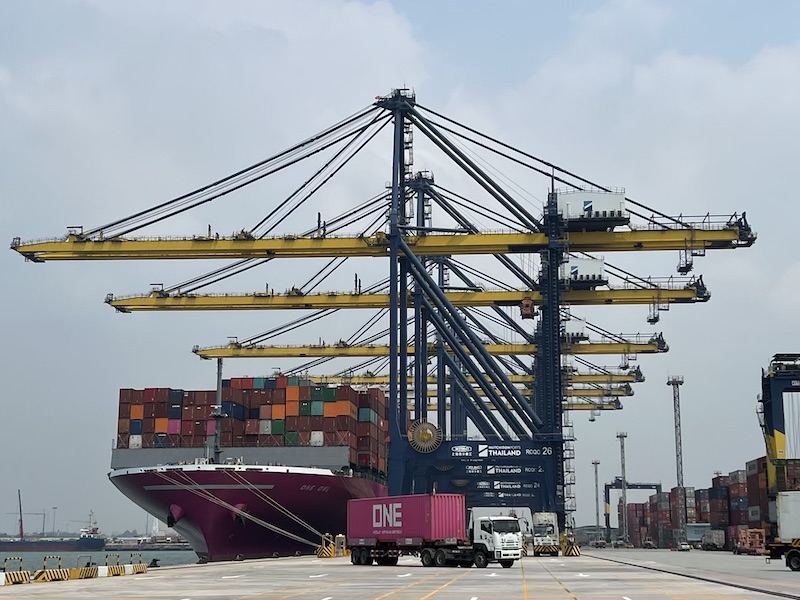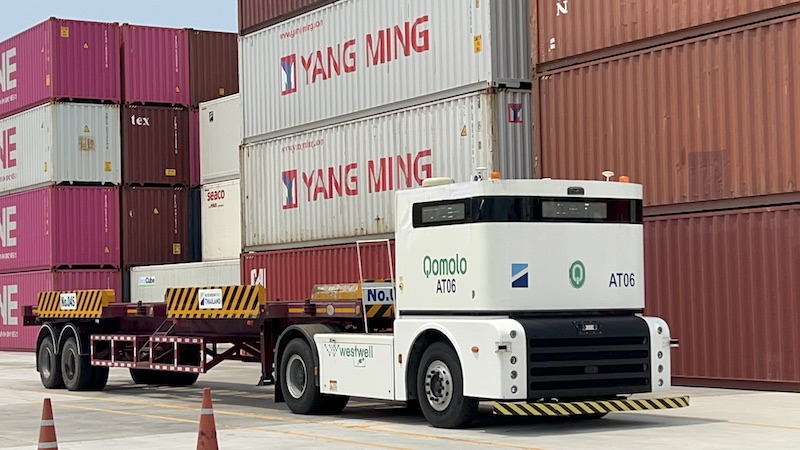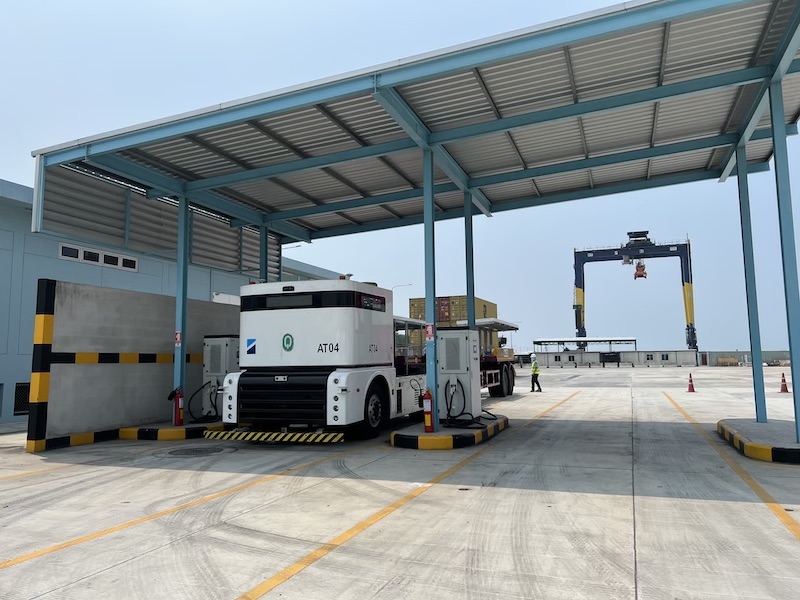As the global trade and economy are gradually recovering from the pandemic, demand for marine ports and services is returning.
An indicator of the national and international market’s growth trajectory, the capacity and quality of port services could play an important role to improve a country’s competitiveness.
Believing that Thailand’s Laem Chabang Port has the potential to become one of the largest premium terminal ports in ASEAN, Stephen Ashworth, Hutchison Ports’ Managing Director of Thailand & Southeast Asia, said they have no doubt about establishing Terminal D, which is equipped with the latest automation and innovative technology needed for logistics and transportation.
“Terminal D will be the largest container terminal in Thailand for sure. So, Hutchison should be the largest terminal operator here for the foreseeable future because we have the total capacity of about 6.5 million TEUs,” he said.
With the automation and remote-control technology along with many initial programs to operate and deliver transshipment service, Ashworth said that Terminal D would not only be a complete smart port but also be the perfect testing ground for port service technology.

Hutchison Ports Thailand plans to replicate and duplicate some of the technology, for example, the autonomous trucks being used in other ports around the world.
“The idea is to export the technology. Other ports in the world also come here to learn the technology, understand it and to bring back to their Hutchison port, to build out the same technology or replicate the same technology.”
For Ashworth, Terminal D is a training ground for the rest of the group. The basic technology used in port service around the world is simply similar but just the procedure in each territory that makes the difference. Therefore, when implemented, the technology needs to be customized.
“That’s why we are using this place as the testing ground for the rest of the group,” he said.
Meanwhile, Ashworth insists that Terminal D will not be an excuse to cut the workforce. Although the automation part will rely less on manpower, the port service still needs people to operate.
“We still need people to be engineers and to operate. We need HR people, finance people. It’s just making the operation more efficient and streamlined, safer and sustainable. It is what we are going to do here.”
Ashworth added that the automation system was also one of the solutions for Hutchison Ports Thailand during this COVID-19 pandemic when their workers, every week, need to quarantine at their houses for 7-10 days. This leads to a manpower shortage sometimes. So, the automation part helps to maintain normal operations during an unusual situation like this.
Certainly, a smart port with the latest technology and innovation comes at a price. Ashworth said for Terminal D, to be finished in 3-4 years, would eventually cost Hutchison Ports Thailand about US$600 million or 20 billion baht.
“We have finished the first phase. All the boats are complete, and we have six ships to shore crane already. All that already cost us about 10 billion baht. So about 50% complete.”
Regarding technology, Ashworth said it was difficult to put a number, but technology surely costs money as the company had to invest in information technology (IT) and artificial intelligence (AI), for example.
“It probably accounts for about 5-10% of that 20 billion baht related to the technology.”
Asked why Hutchison Ports Thailand is willing to put their efforts and a huge investment in Thailand, Ashworth said they saw the capacity in Laem Chabang Port to become an important hub of ASEAN.
“Laem Chabang Port is currently the fourth biggest port in the ASEAN region after Singapore, Port Klang and Kampung Tanjung Lang in Malaysia. Laem Chabang Port handled 8.5 billion TEUs in 2021,” he said.
Ashworth explains that compared to those ports in Singapore and Malaysia, Laem Chabang is directly not a transshipment port. It is more of a gateway for managing cargoes, imports and exports.

Meanwhile, Laem Chabang Port is not in an ideal position. It is just actually slightly away from the main trading route — from Singapore upwards to Vietnam and China.
However, Thailand’s economy is the second largest in ASEAN, having an important global manufacturing industry, with high growth of middle-class consumption, and mega-projects like the Eastern Economic Corridor (EEC). So, Laem Chabang could naturally grow as a port to serve both domestic and international logistics.
“Within the region, Laem Chabang can be like a mini-hub for, for example, Cambodia, for transshipment — from Laem Chabang to Sihanoukville Port in Cambodia — and maybe into Vietnam as well.”
As it is a deep-water port, Laem Chabang can serve larger ships. However, for him, it would be “very challenging” for Laem Chabang Port to become a big transshipment player like Singapore.
Ashworth said Laem Chabang Port’s competitiveness needs to be boosted but that the job could not be achieved by Hutchison Port Thailand alone.
He suggested that the Port Authority of Thailand and the Customs Department make the transshipment of cargo easier, in order to encourage the movement of cargoes to transit in Thailand rather than in Singapore and Malaysia.
“At the moment, the customs process is too complicated. Everything has to be checked [with] paperwork. It discourages more cargo from coming into Thailand. If Thailand can simplify the procedure, maybe some transshipment can come. So, I think Laem Chabang Port in the future will only grow domestic cargo through import and export of Thailand’s cargo.”
Ashworth added that Laem Chabang Port represents 74-75% of Thailand’s total port traffic. If the Thai government and the Port Authority of Thailand can consolidate all of the country’s port activities at Laem Chabang, the results would be great for Thailand.

“There’s a number of facts there which you could consider if you are serious about making a Laem Chabang Port a true hub of ASEAN. How Thailand develops its infrastructure rests with the Thai government … in terms of port locations and where ports should be located.”
Ashworth said Hutchison would always facilitate or try to follow the government’s direction. Hutchison will be part of the process in terms of helping to develop that strategy for the government.
“We want to make a more efficient, safer, and more environment-friendly port here in Thailand.”





